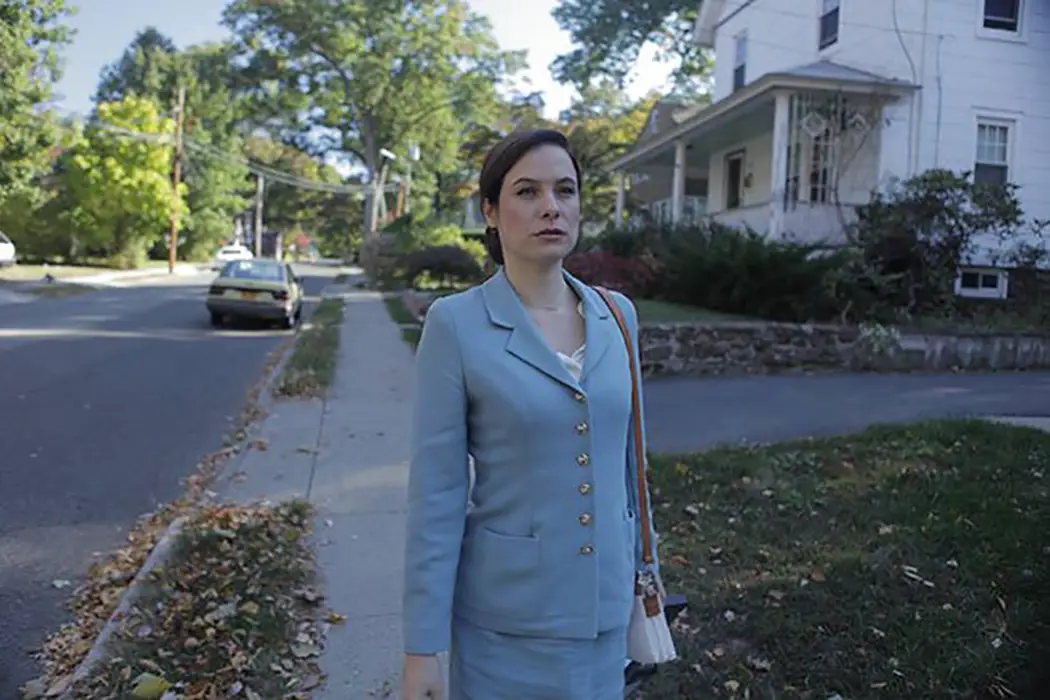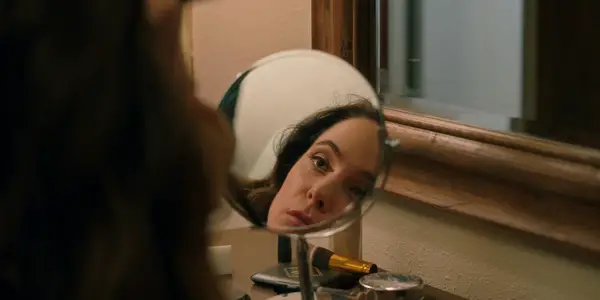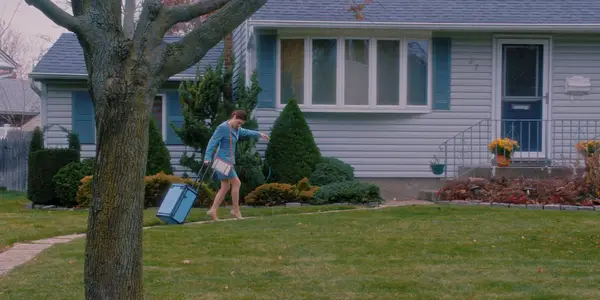EASY LIVING: Exploring Failure, Contentment & Self-Help Advice

Amanda Mazzillo is a writer with an MFA in Dramatic…
Adam Keleman wrote, directed, and produced Easy Living, his feature film debut. The story follows Sherry Graham (Caroline Dhavernas), a young woman who works days as a door-to-door cosmetics salesman, and spends her nights drinking at a local bar, bringing men back to the motel room she calls home, and watching old movies on a tiny television.
Sherry’s life seems almost disconnected from the rest of the world of which she is a part. Her character is constantly reciting speeches taken from self-help books she reads in order to give herself a confidence boost, yet she also seems fully content in her small existence.
Caroline Dhavernas‘ character of Sherry Graham is deeply interesting; a perfect mixture of realism and the type of subtle fantasy frequently found in the old films Sherry enjoys watching after another long day of knocking on doors.
The Subtle Art of Design and World Building
Adam Keleman did a wonderful job of building a uniquely twisted version of reality filled with memorable characters. I was impressed with how the world the film takes place in felt so similar to our own, making the subtle differences blend in and create a natural world, with hints of something slightly strange and unique.
Easy Living is both stylized, as well as taking elements from average small town living. The film uses costumes to help tell the story and spark the central character development of the film. When Sherry is projecting the image of a perfectly professional woman, she is in a pastel skirt suit matched perfectly to her case filled with beauty products. Once she returns home, she quickly changes into much more casual clothes, changes her makeup, and her hairstyle, creating a completely different side to her character.

I love how the film used costumes and other visual cues to differentiate between Sherry putting on some sort of show. The performances in this film are so strong, I was never sure when or if Sherry was ever her genuine self, or if such a thing existed outside of the different ways she presents herself when around different groups of people.
The differences in costume, makeup, and speech work well to show two different sides, one fake and one genuine, yet the film goes even further and makes the character feel so unique and wrapped up in the way others see her, it feels her only truly genuine moments are the ones spent alone. One of the strongest scenes in this regard was how quickly she changed from being outgoing and trying so hard for a man’s attention to turning on an old movie and masturbating in her bed.
Natural Representation
One of my favorite aspects of Easy Living is how naturally it includes plot points, which would have been over-discussed in most films. The fact Sherry’s sister Abby lives with another woman is not made some sort of joke.
Their relationship is depicted with the same level of normalcy normally only shown in regards to heterosexual relationships. The relationship between Abby and Liz (Quincy Tyler Bernstine) is not seen as something outside of the norm that needs to be discussed at every moment.
In addition to this relationship being treated naturally and realistically, Sherry’s best friend Danny (Jen Richards) being portrayed by a transgender actress is not mentioned by the characters. I think this representation is much better than films trying to check off boxes of representation by making characters engage in long conversations and feel as if they must be treated differently than anyone else.
This film works well in pushing to the next level of representation, where characters are all seen simply as characters helping to tell a story, instead of being labeled by their sexual or gender identity.

Another aspect of the film I was pleasantly surprised with was the depiction of female masturbation, as well as the woman being the one to initiate sex. Sherry spends her nights getting drunk in a bar and picking up men. I think the film did a great job of pointing out the difference between the depiction of men and woman having casual sex. For Sherry, the people around her see her life as something falling apart partially due to her drinking, dead-end job, and ease in which she engages in sexual activities.
Her sexual adventurousness is seen throughout the film, especially in the last section of the film. I enjoyed that the film portrayed a woman as the one who is adventurous and seeking out sex. I have not seen many films where the woman is the one going after the man, and I’ve also not seen many films where the woman ends up masturbating when things don’t work out, which is a staple for male characters.
Caroline Dhavernas did a wonderful job portraying a character who was given the chance to be the not-so-innocent one. Men are given roles such as this often, yet women are frequently portrayed as something innocent and pure, without the chance to make mistakes or express their desires.
Dhavernas gave a subtly layered performance, especially in how she connected the different sides of Sherry’s personality, giving the character depth and intrigue. One scene showed Sherry having a glass of wine with two of her customers, which worked wonderfully to connect the scenes of alcohol dependency shown in her after-work life.
In this scene, Sherry is shown taking a longer drink from her wine glass and going back for a second. She doesn’t down the entire glass in one gulp, which would have been too obvious a choice. Instead, we see her slowly letting the edges between her personas fall apart and seep into each other.
Easy Living: Conclusion
Easy Living works wonderfully as a character study of Caroline Dhavernas‘ superbly acted character Sherry Graham. The film looks into feelings of failure, contentment, and ambition and how these feelings differ in Sherry’s mind and the minds of everyone else in her life. Easy Living is a film I definitely recommend checking out, especially for its wonderful character development and representation.
What sorts of different roles do you wish women received more often? Tell us in the comments.
Easy Living was released in US theaters on September 15th and online on September 19th.
Does content like this matter to you?
Become a Member and support film journalism. Unlock access to all of Film Inquiry`s great articles. Join a community of like-minded readers who are passionate about cinema - get access to our private members Network, give back to independent filmmakers, and more.
Amanda Mazzillo is a writer with an MFA in Dramatic Writing from SCAD and a BA in Writing & Linguistics and Film Studies minor from Georgia Southern University. She enjoys writing comedy and exploring all forms of media. Her Twitter name is a bad pun: @mazzillofirefox










